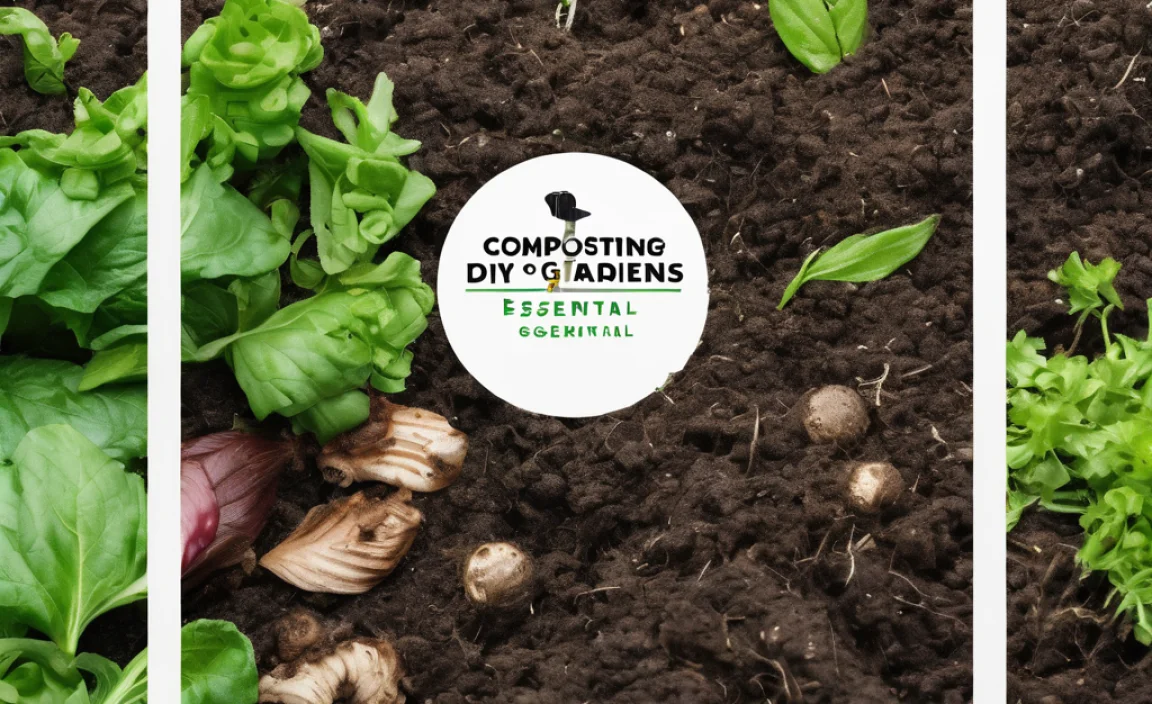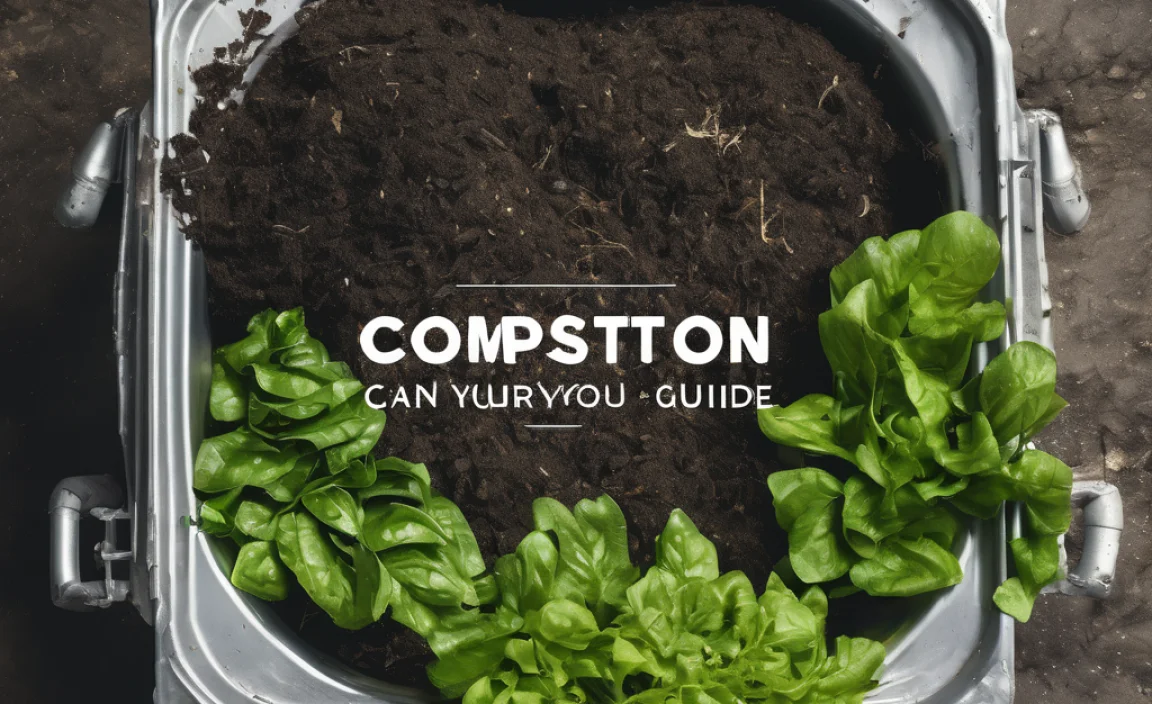Ever feel like your kitchen scraps and yard waste have nowhere to go? You’re not alone! Many of us want to compost, but the idea of managing a smelly, messy pile can be a bit of a turn-off. The good news is, you don’t have to settle for that. There are easier ways to turn that waste into garden gold without the fuss. This guide is here to show you exactly how to do it, step-by-step. Let’s get started and uncover some simple alternatives!
Composting Without the Chaos: Your Beginner-Friendly Guide
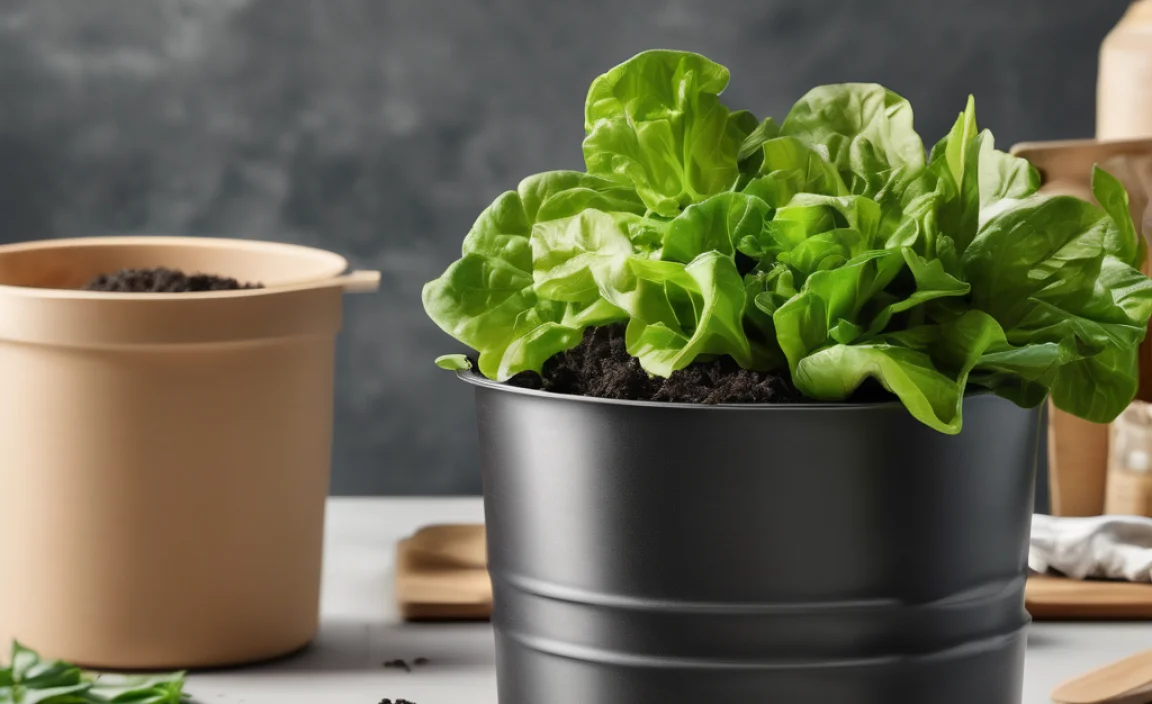
Hey there, fellow home improvers and garden enthusiasts! Troy D Harn here from TopChooser, ready to break down a topic that can seem a bit tricky: composting. We all know composting is great for the planet and our gardens, turning food scraps and yard trimmings into nutrient-rich soil. But let’s be honest, the thought of setting up a traditional aerobic compost pile – with all the turning and monitoring – can be a bit intimidating, especially when you’re just starting out or want a cleaner, simpler approach. That’s where “aerobic composting alternatives” come in!
An aerobic compost pile relies on oxygen to help microbes break down organic matter. It’s effective, but it often requires active turning to ensure enough air gets to the materials. If you’re looking for something less hands-on, something that handles common kitchen waste with minimal fuss, or a system that fits into a smaller space, you’ve come to the right place. We’re going to dive into some fantastic alternatives that deliver the benefits of composting without the common headaches.
Think of this as your friendly neighbor, Troy, showing you the ropes. We’ll keep it simple, practical, and totally achievable. No fancy jargon, just straightforward advice to help you make the best choice for your home and garden. We’ll cover what these alternatives are, how they work, what you need, and how to get started. Ready to transform your waste into a gardener’s dream?
Why an Aerobic Composting Alternative Might Be Right for You
Traditional aerobic composting involves a delicate balance of “greens” (nitrogen-rich materials like food scraps and grass clippings) and “browns” (carbon-rich materials like leaves and cardboard), plus oxygen and moisture. While this method yields excellent compost, it can be:
- Time-consuming: Regular turning (every week or two) is often needed to keep the process going efficiently and prevent odors.
- Space-intensive: A well-functioning aerobic pile can grow quite large.
- Messy: Dealing with a large, potentially damp pile of organic matter isn’t everyone’s cup of tea.
- Smelly: If the balance is off or it doesn’t get enough air, anaerobic conditions can set in, leading to unpleasant smells.
If any of these sound like deal-breakers for you, exploring an aerobic composting alternative is a smart move. These systems often offer a more contained, less labor-intensive, and quicker way to break down scraps. They are perfect for apartment dwellers, busy homeowners, or anyone who prefers a tidier, more automated composting experience.
Meet the Top Aerobic Composting Alternatives
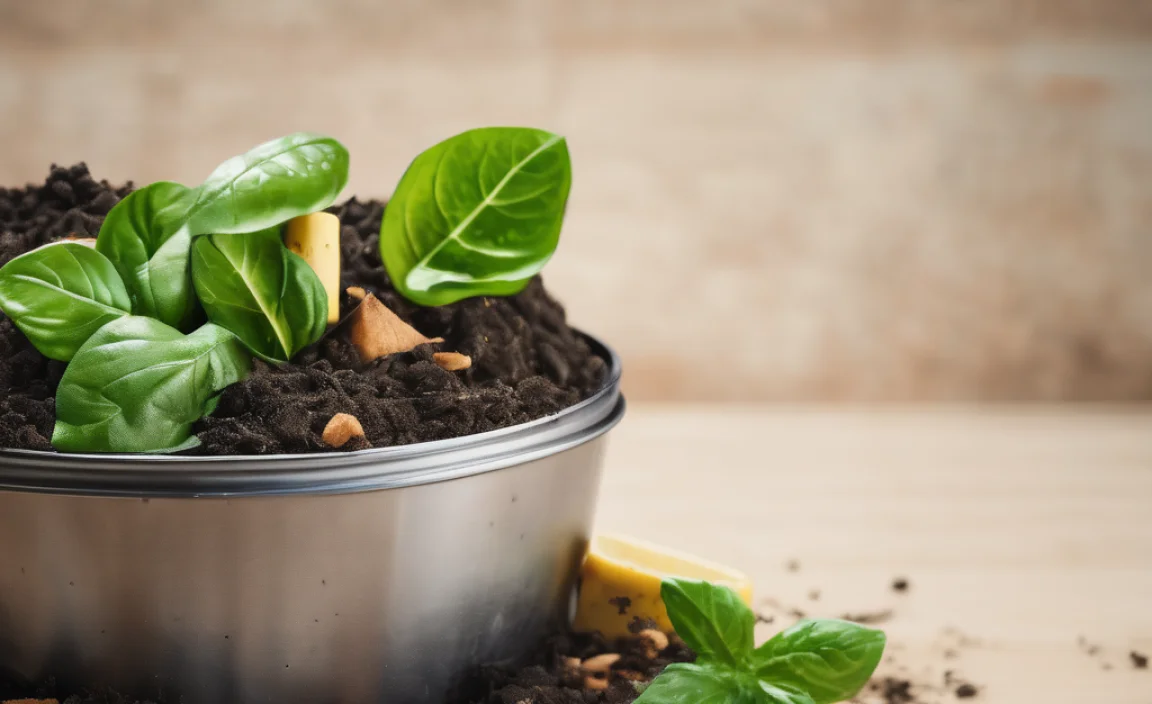
When we talk about aerobic composting alternatives, we’re looking at systems that either mimic aerobic decomposition in a simpler way or use different biological processes that are still beneficial and fast. The most popular and beginner-friendly options fall into a few key categories:
1. Tumbler Composters
Tumblers are essentially sealed barrels mounted on a frame, allowing you to rotate them easily. They’re a fantastic alternative because they keep compost contained, deter pests, and the tumbling action aerates the material for you.
How Tumblers Work:
You add your “greens” and “browns” to the drum. When it’s full (or partially full), you simply give it a few spins every few days. This mixes everything up, introducing oxygen and speeding up decomposition. The sealed design also helps retain heat, which further accelerates the composting process. Many tumblers have separate chambers, allowing you to add new material to one side while the other side finishes composting.
What You Can Compost:
- Fruit and vegetable scraps
- Coffee grounds and tea bags
- Eggshells
- Yard trimmings (leaves, grass clippings in moderation)
- Paper and cardboard (shredded)
What to Avoid (Generally):
- Meat, bones, and dairy products (can attract pests and cause odors in enclosed systems)
- Oily foods
- Diseased plants
- Weeds that have gone to seed (unless your composter gets very hot)
Pros of Tumbler Composters:
- Fast: Tumbling significantly speeds up decomposition, often producing compost in 4-8 weeks.
- Pest-resistant: The sealed design keeps rodents and other critters out.
- Odor-controlled: Proper management and the sealed nature usually prevent bad smells.
- Easy to turn: No need for a pitchfork!
- Neat and tidy: Contained system looks good in most yards.
Cons of Tumbler Composters:
- Capacity: They can have a smaller capacity than open piles.
- Cost: Can be more expensive upfront than DIY bins.
- Moisture sensitive: Too wet or too dry can slow things down.
- Batch composting: Many work best when filled and then left to cure, meaning you can’t keep adding indefinitely without careful management.
2. Electric Composters (Food Cyclers)
These countertop appliances are modern marvels. They use heat and aeration to break down food scraps in a matter of hours, not weeks or months. While they aren’t “compost” in the traditional sense (they create a dried, ground-up food material), they drastically reduce food waste and create a valuable soil amendment.
How Electric Composters Work:
You simply load your food scraps into the bucket, close the lid, and push a button. The machine heats, grinds, and aerates the food, drying it out and reducing its volume by up to 90%. It’s a silent, odor-free process. The end product is a nutrient-dense, soil-like material that can be mixed directly into your garden soil or added to a traditional compost pile to boost its nutrient content.
What You Can Compost:
- Almost all food scraps: Meat, dairy, bones (check manufacturer guidelines!)
- Fruit and vegetable scraps
- Coffee grounds and tea bags
- Food-soiled paper products (like napkins)
What to Avoid (Generally):
Most can handle a wide range, but always check your specific model’s manual. Generally, very large bones or excessive amounts of hard materials might be an issue.
Pros of Electric Composters:
- Fastest: Transforms food waste in hours.
- Odor-free: Excellent for indoor use.
- Handles difficult items: Many can process meat, dairy, and even small bones which are tricky for traditional composting.
- Reduces waste volume: Significant reduction in food waste heading to landfill.
- Easy to use: Push a button and walk away.
Cons of Electric Composters:
- Cost: These are the most expensive option upfront.
- Energy use: They use electricity to run.
- Not “true” compost: The end product needs further integration into soil or a compost pile to fully break down.
- Capacity: Limited by the size of the bucket.
3. Worm Composting (Vermicomposting)
This method uses special composting worms (like Red Wigglers) in a bin to break down organic material. It’s highly efficient, produces nutrient-rich compost (called “worm castings” or “vermicast”), and is great for small spaces, including indoors or on balconies.
How Worm Composting Works:
You set up a bin with bedding material (like shredded newspaper or coconut coir). Then, you introduce your composting worms. You feed them kitchen scraps, and they eat the material, leaving behind their nutrient-rich castings. The worms naturally aerate the bin as they burrow.
What You Can Compost:
- Fruit and vegetable scraps
- Coffee grounds and tea bags
- Eggshells (crushed)
- Shredded newspaper and cardboard
- Plain cooked pasta and rice
What to Avoid:
- Meat, bones, dairy, and oily foods (can attract pests and go rancid)
- Citrus and onions in large quantities (can make the bin too acidic)
- Diseased plants
- Salt
Pros of Worm Composting:
- Excellent compost: Worm castings are a super-rich fertilizer.
- Fast processing: Worms are efficient eaters.
- Good for small spaces: Bins can be compact and kept indoors or on patios.
- Educational and engaging: Fun for all ages to observe.
- Relatively low cost: Can be very affordable to set up.
Cons of Worm Composting:
- Specific worms needed: Red Wigglers are best, not earthworms from your garden.
- Temperature sensitive: Worms prefer moderate temperatures and can die if it gets too hot or cold.
- Can attract fruit flies: If food isn’t buried properly.
- Requires a bit of knowledge: Understanding worm needs is key.
4. Bokashi Composting
Bokashi is a fascinating anaerobic fermentation process that pickles your food waste. It’s done in a special airtight bucket. It’s not technically composting, but it’s a highly effective way to pre-treat food waste, making it easier to break down later.
How Bokashi Works:
Food scraps are layered in an airtight Bokashi bucket with an inoculated bran mixture (containing effective microorganisms). The microorganisms ferment the waste, preserving it and preventing foul odors. An important byproduct is “Bokashi tea,” a nutrient-rich liquid that can be drained off and used as a fertilizer. Once the bucket is full, it ferments for two weeks. The fermented material is then buried in the garden or added to a traditional compost pile to decompose fully, which happens much faster due to the pre-fermentation.
What You Can Compost:
- All food scraps, including:
- Meat
- Dairy
- Oily foods
- Bones (smaller ones)
- Fruit and vegetable scraps
- Coffee grounds and tea bags
What to Avoid (Generally):
Non-food items, large bones that won’t fit in the bucket.
Pros of Bokashi Composting:
- Handles all food types: Excellent for meat, dairy, and oily foods.
- Odor-free fermentation: The airtight system prevents smells.
- Produces liquid fertilizer: The “Bokashi tea” is a valuable byproduct.
- Space-efficient: Small buckets can be kept indoors.
- Fast final decomposition: The pre-fermented material breaks down quickly when buried.
Cons of Bokashi Composting:
- Requires specialized bucket and bran: Ongoing cost for the bran.
- Not finished compost: The end product needs further decomposition in soil or a compost pile.
- Can be acidic: The fermented material is acidic and needs to be buried or composted, not applied directly to plants.
- Requires a burying spot: You need access to soil or a compost bin to finish the process.
Getting Started: Your Step-by-Step Plan
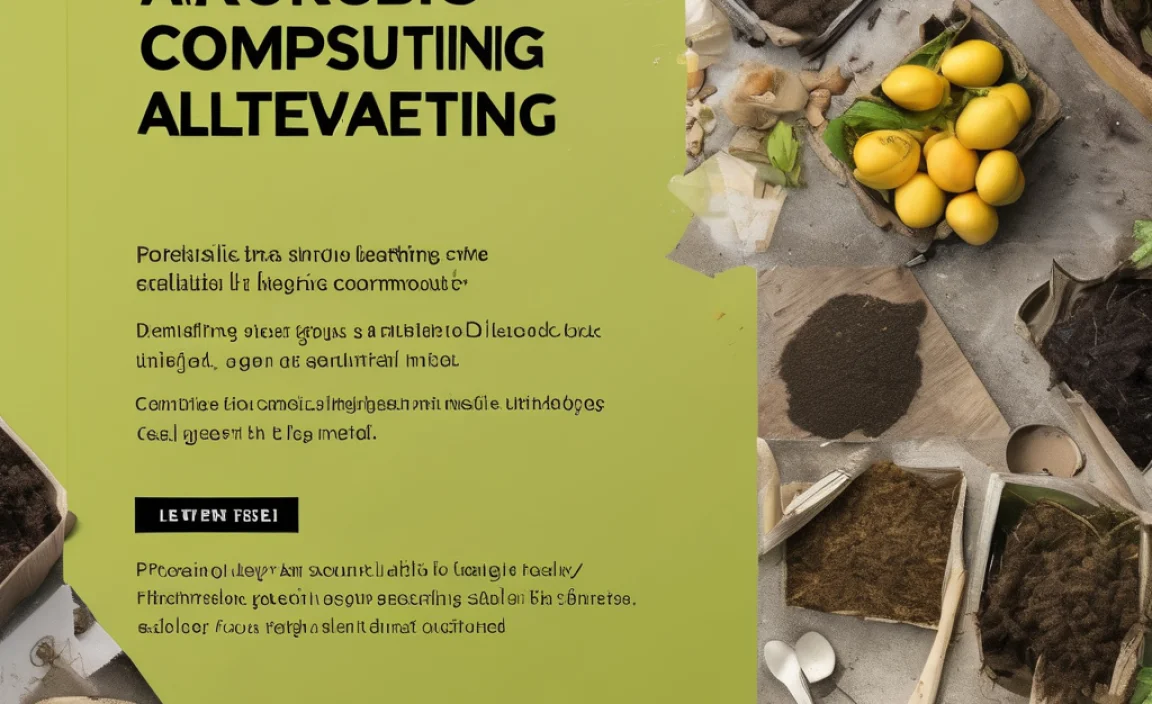
No matter which alternative you choose, getting started is easier than you think. Here’s a general roadmap:
Step 1: Choose Your Alternative
Consider your space, budget, the types of waste you generate most, and how hands-on you want to be. Do you have a large yard and want something faster than a pile? A tumbler might be perfect. Live in an apartment and want to get rid of all food waste, including meat? Bokashi or an electric composter could be your answer. Want a super-rich fertilizer and enjoy observing nature? Vermicomposting is for you.
Step 2: Gather Your Materials
- Tumbler: Purchase a tumbler composter. You’ll also need a good mix of greens and browns to start, though tumblers are quite forgiving.
- Electric Composter: Purchase the unit. No other materials are typically needed besides your food scraps.
- Worm Bin: Purchase or build a worm bin. Obtain composting worms (Red Wigglers are recommended, not garden earthworms. Reputable online suppliers or local gardening groups are good sources). Prepare bedding material (shredded newspaper, coir, or straw).
- Bokashi: Purchase a Bokashi bucket kit (usually comes with bran).
Step 3: Set Up Your System
- Tumbler: Assemble according to manufacturer instructions. Place it in a convenient spot, preferably with some sun to help it heat up.
- Electric Composter: Place it on a countertop near an outlet.
- Worm Bin: Moisten your bedding material until it feels like a wrung-out sponge. Fill the bin about halfway with bedding. Add your worms gently. Let them acclimate for a day or two before feeding.
- Bokashi: Place the bucket in a convenient, accessible location.
Step 4: Start Adding Your Waste
- Tumbler: Add kitchen scraps and yard waste. Aim for a rough balance of greens and browns. Chop larger items to speed up decomposition. Fill the tumbler, then start turning regularly. Once full, let it cure while you start a new batch if you have a dual-chamber tumbler, or continue adding if it has a larger capacity.
- Electric Composter: Add food scraps as you generate them. Close the lid and start the cycle. Remove the dried output once complete.
- Worm Bin: Dig a small hole in the bedding and add a small amount of food scraps. Cover the food scraps with bedding. Don’t overfeed! Start with small amounts and increase as your worm population grows.
- Bokashi: Add food scraps to the bucket, pressing them down to remove air. Sprinkle a tablespoon or two of Bokashi bran over the scraps. Close the lid tightly to ensure it’s airtight. Drain Bokashi tea regularly.
Step 5: Maintain and Harvest
- Tumbler: Continue to turn every 2-3 days. Monitor moisture; it should be damp like a wrung-out sponge. If too dry, add a little water. If too wet, add more brown material.
- Electric Composter: Empty the dried food output when the cycle is complete.
- Worm Bin: Continue feeding every few days, burying the food. Gently turn the top layer of bedding occasionally. When the bin is full of castings, you can harvest by migrating the worms to a new bin or using a method like “dump and sort.”
- Bokashi: Once the bucket is full, let it ferment for two weeks. Then, bury the fermented material in your garden bed, compost pile, or a large planter. It will break down quickly.
Key Differences: Which Alternative is Best for You?

To help you decide, here’s a quick comparison:
| Feature | Tumbler Composter | Electric Composter | Worm Bin (Vermicomposting) | Bokashi Composting |
|---|---|---|---|---|
| Speed to “Compost” | 4-8 weeks | Hours | 2-4 months for castings | 2 weeks fermentation + Burying |
| Can handle Meat/Dairy/Oils? | Generally No (small amounts ok if properly managed) | Yes (check model) | No | Yes |
| Odor Potential | Low (if managed well) | None | Low (if managed well) | None during fermentation |
| Pest Resistance | High | High | Medium (if managed well) | High |
| Space Requirement | Moderate (yard) | Small (countertop) | Small (indoor/outdoor) | Small (indoor) |
| Upfront Cost | Medium | High | Low to Medium |

I am passionate about home engineering. I specialize in designing, installing, and maintaining heating, ventilation, and air conditioning systems. My goal is to help people stay comfortable in their homes all year long.

